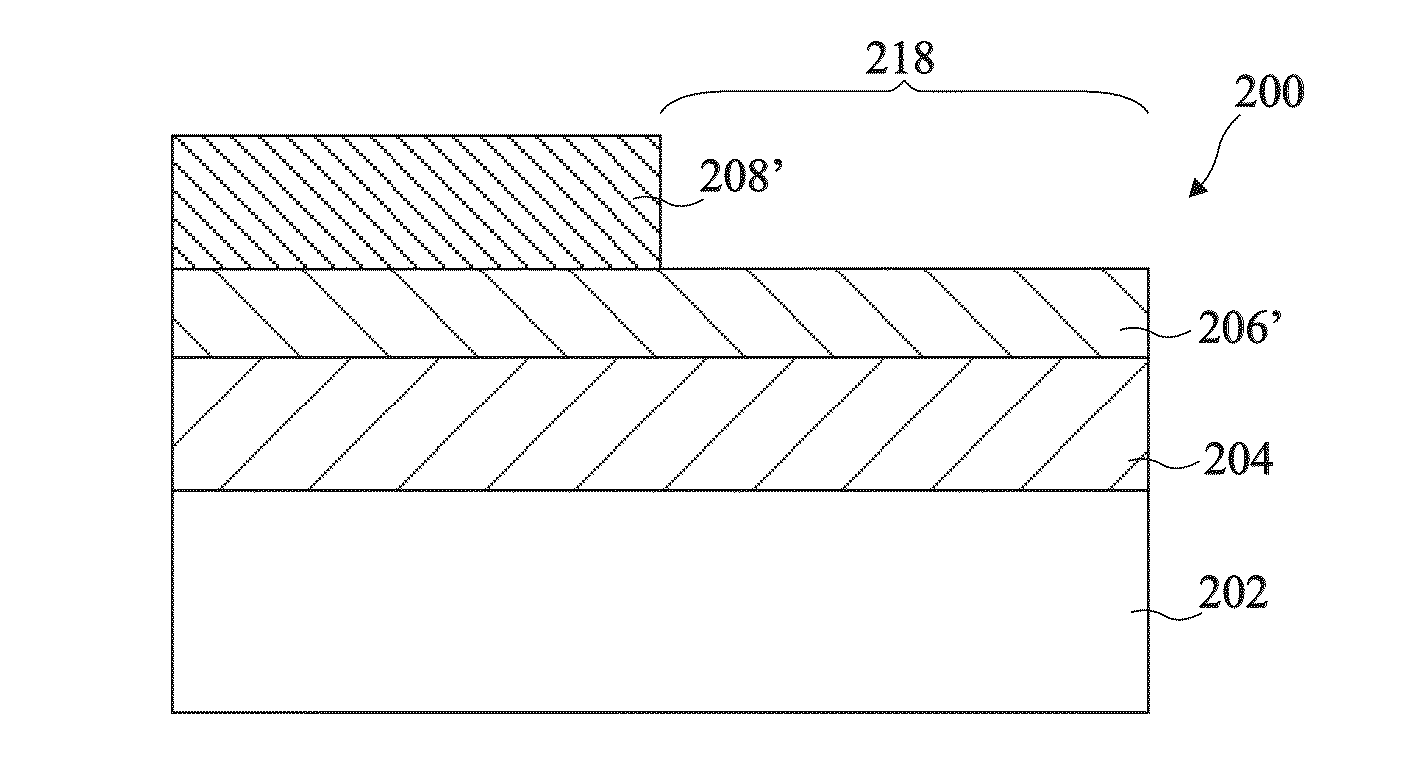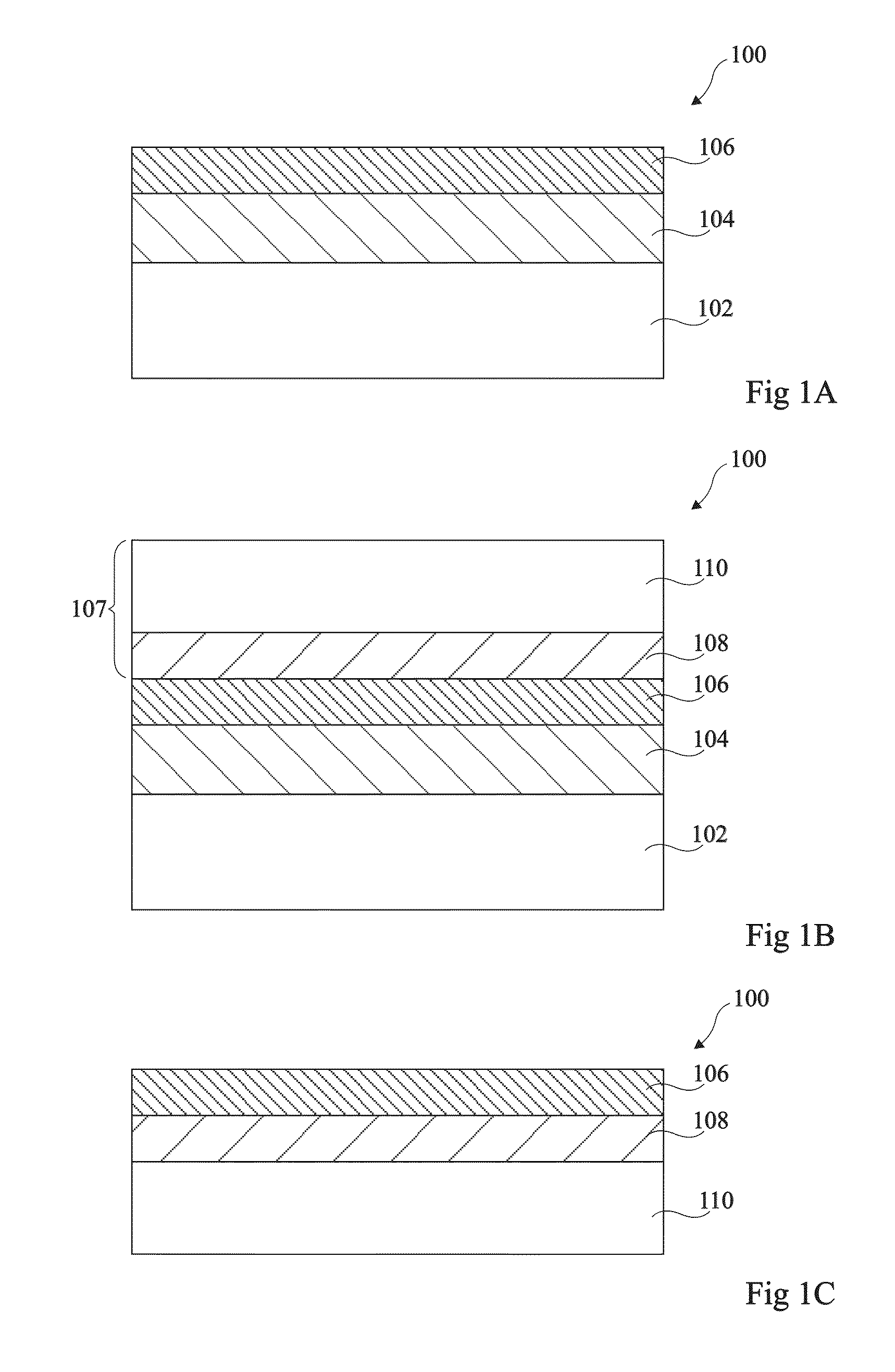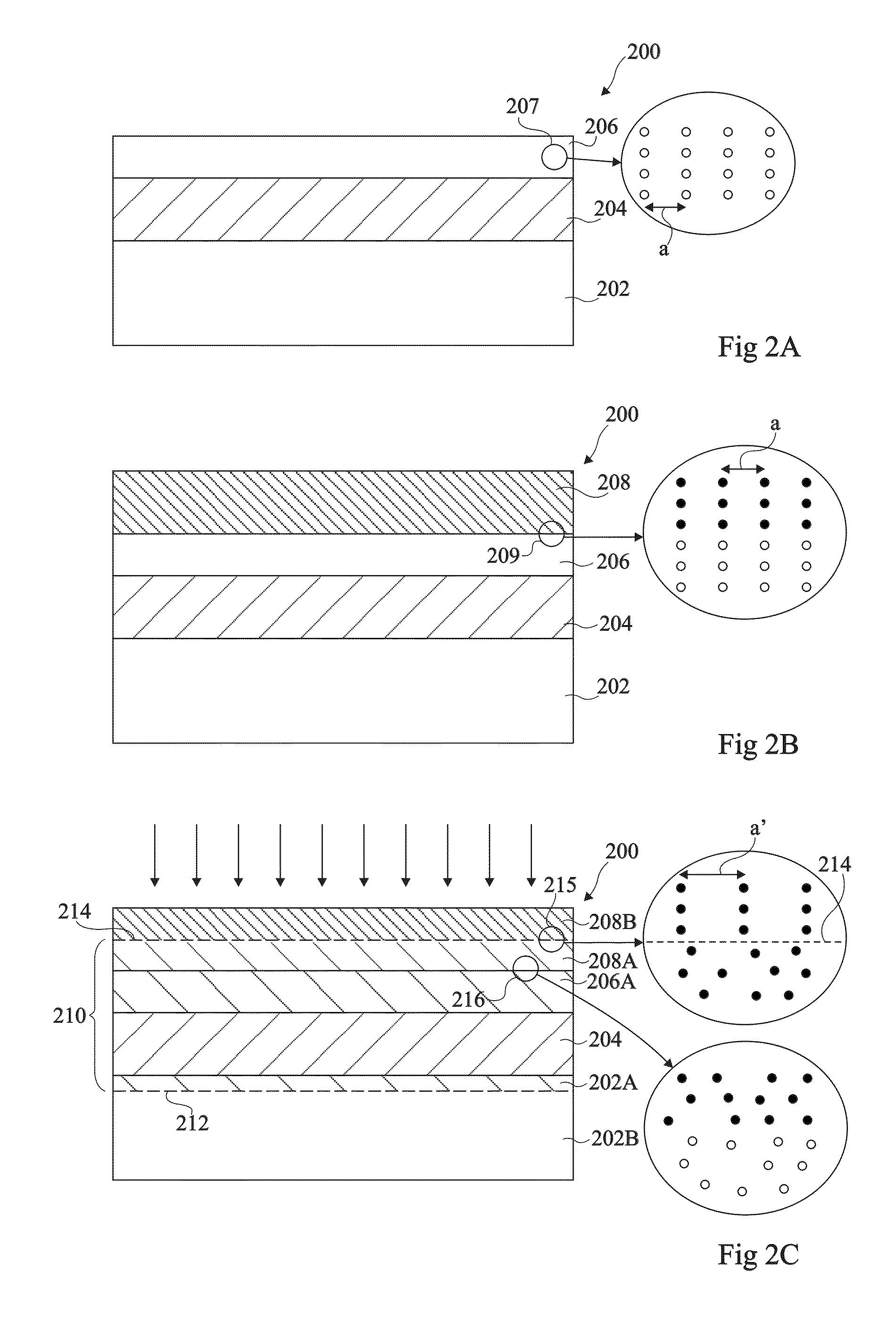Method of forming a strained silicon layer
a technology of strained silicon and layer, applied in the field of forming a strained silicon layer, can solve the problem of a relatively high density of defects in the relaxed sige layer
- Summary
- Abstract
- Description
- Claims
- Application Information
AI Technical Summary
Benefits of technology
Problems solved by technology
Method used
Image
Examples
Embodiment Construction
[0030]FIGS. 1A to 1C are cross-section views of a structure during successive steps in a method for forming a strained silicon layer.
[0031]FIG. 1A illustrates a structure 100 comprising a silicon substrate 102. A relaxed silicon germanium (SiGe) layer 104 has been formed by epitaxial growth over the silicon substrate 102. SiGe layer 104 for example comprises lower concentrations of germanium near the interface with the silicon substrate 102, and higher concentrations of germanium towards its upper surface. A silicon layer 106 has been formed by epitaxial growth over the SiGe layer 104, resulting in a strained silicon layer as the silicon atoms are stretched beyond their normal inter-atomic distance by the presence of the underlying SiGe layer 104.
[0032]FIG. 1B illustrates the silicon structure 100 after a subsequent step in which an oxidized silicon support substrate 107, comprising an oxide layer 108 and a silicon substrate 110, is bonded to the strained silicon layer 106.
[0033]FIG...
PUM
| Property | Measurement | Unit |
|---|---|---|
| thickness | aaaaa | aaaaa |
| thickness | aaaaa | aaaaa |
| thickness | aaaaa | aaaaa |
Abstract
Description
Claims
Application Information
 Login to View More
Login to View More - R&D
- Intellectual Property
- Life Sciences
- Materials
- Tech Scout
- Unparalleled Data Quality
- Higher Quality Content
- 60% Fewer Hallucinations
Browse by: Latest US Patents, China's latest patents, Technical Efficacy Thesaurus, Application Domain, Technology Topic, Popular Technical Reports.
© 2025 PatSnap. All rights reserved.Legal|Privacy policy|Modern Slavery Act Transparency Statement|Sitemap|About US| Contact US: help@patsnap.com



